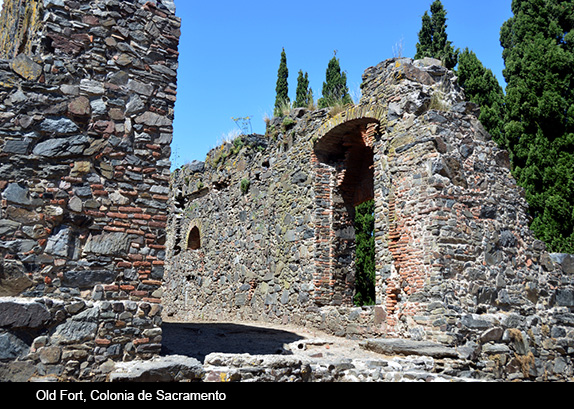Editor's note: This is the fourth installment examining progressive national policies in Uruguay and what America can learn from the resulting gains. Part 1 examined education and healthcare, Part 2: renewable energy, Part 3: progressive laws in the areas of same-sex marriage, abortion and the legalization of marijuana.

In this last of a four-part series on Uruguay, I want to talk about work, the backbone of any country, the motor that puts food on people’s tables, attends to their health needs, educates them, provides them with culture and recreation, and creates the space for dreams.
On a recent trip, my son was driving my partner and me to Colonia de Sacramento, a lovely colonial town to the west of Montevideo and the point from which the ferry makes its daily runs to Buenos Aires, the capital of Argentina across the wide La Plata River. It was my birthday, and we were going to spend the day sightseeing—something we are rarely able to do when we visit since everyone in my family there works long hours and takes minimal vacation time.
As we left the metropolis, farmland stretched out on either side of the highway. Pristine fields surrounded neat homes and barns. Swiss immigration in this part of the country brought its own culture, and healthy cows produce lavish offerings of cheeses and other dairy products. Sausages that are a part of the ritual asados (Uruguayan-style bar-b-que) are also sold here. Soon we passed Libertad (Freedom), the misnamed prison reminiscent of the darkest days of the dictatorship. Today it houses common criminals, and continues to give me the chills. Named for the town where it is located, the nomenclature nevertheless holds a cruel irony.

Gregory pointed out a large, brightly painted building a little farther along. One large block was brilliant purple, another vibrant green. It used to be a slaughterhouse, he told me, once the livelihood of those who live nearby. When it closed, the surrounding community suffered. But in recent years the structure has been revitalized to house several dozen different enterprises—some collective, some cooperative, some socialist in nature, a few even capitalist. The Broad Front government has encouraged this sort of configuration nationwide, in which independent manufacturing can flourish while sharing access to workers dining rooms, clinics, and other services. A variety of university departments are involved in ongoing consultations with people in different neighborhoods and communities. Once they know their most pressing needs, work and work implements can be designed to fulfill those needs. At the University’s Industrial Design School, one day, we saw the results of such consultation in a series of innovative agricultural implements.

This led to a discussion of labor in present day Uruguay. I knew that the country was prosperous during the early to mid-twentieth century. It was often called the Switzerland of Latin America then, with its well-kept farms and bucolic atmosphere. But Uruguay, along with its neighbors, began to suffer the pressures of US plans for its development: always favoring the interests of empire rather than the wellbeing of the nation within the empire’s sphere of influence. It was also hampered by the country’s ruling class, accustomed to making its profits from an extractive economy (for example cattle) without having to invest; and without the capacity to think about the nation’s future. By 1973-1985 (the years of the dictatorship), neo-liberal economic policies were firmly entrenched. Many local factories were closed. Large numbers of people had lost jobs.
In 1982, according to UN statistics, unemployment stood at 30%. Two years later real wages had fallen by 45%. Education, which had previously been able to count on 21% of the gross national product, now got only 13%. Between 1982 and 1984 the gross national product shrank by a hefty 20%.
Needless to say, one of the dictatorship’s main goals was to decimate Uruguay’s strong labor movement. Labor leaders were imprisoned, tortured, murdered, and the most fortunate forced into exile. Even the words sindicato (union) and sindicalista (unionist) were outlawed. They could not be spoken in public for fear of police retaliation. The Uruguayan Left had to devise new and creative ways of communicating, within their own ranks as well as with the public at large.

But in 1983 the long tradition of worker solidarity rose again. Unions began to reorganize, and 150,000 people joined the May Day demonstration that year. This was an event that helped tip the political balance. The PIT (Plenario Intersindical de Trabajadores, or Inter-Union Workers Assembly) began to actively struggle again for freedom, jobs, higher wages, and amnesty for its imprisoned members. In 1985 the PIT was joined by the Convención nacional de trabajadores (National Workers Convention) to become the PIT-CNT.
This strong show of worker power, along with defiance in many other sectors of society—students, Left political leaders, and ordinary citizens—helped bring an end to one of the most brutal dictatorships in Latin America. As I mentioned in a previous article, in 1980 when the military dictatorship staged a referendum to get voters to check “yes,” the only option on a ballot designed to prolong its rule, 57.2% of the people wrote in the word “no.” This was the death knell that eventually led to the end of military rule.

I was interested in knowing how the labor situation looks today. Uruguay suffered a serious economic downturn staring around 1999 and peaking in 2002. UN unemployment figures for the country show a 12% unemployment rate in 1999, 14% in 2000, 15.2% in 2001, and a whopping 19.4% in 2002. Needless to say, the situation was made worse by large numbers of underemployed or partially employed workers.
There was a great deal of pressure during those years to privatize, a neo-liberal “solution” put forth by the International Monetary Fund and World Bank. But Uruguayan workers resisted. The banks were a notable example. Tellers and others at Uruguay’s National Bank found another route. They held public meetings with depositors, ending in an agreement that the tellers take a temporary cutback in salary and the depositors commit to leaving their money in their accounts. The Bank recovered, retained its public status, and is strong today.
Beginning in 2003, recovery was on its way. The following year unemployment fell to 13%, it was 12.2% in 2005, 10.8% in 2006, 9.2% in 2007, and 7.6% in 2008 and 2009 (just slightly lower than it is in the US today). By 2010 it had fallen to 6.8%, it was 6% in 2011 and, although this figure is anecdotal rather than a UN statistic, I was told that it now hovers slightly above 5%. In global terms, this means that there is virtually no unemployment, since the figure includes people who are between jobs.
For a comparison of how Uruguay ranks globally with respect to unemployment statistics, Zimbabwe currently has the worst at 95%, the US hovers around 8%, and countries with little or no unemployment include Singapore (2%), Cuba (1.4%) and tiny Monaco (1%). Again, these UN statistics testify only to people having some sort of job—not necessarily one that meets all their needs.
This also doesn’t mean there are no problems in Uruguay’s labor market. Worker protection is good, benefits are acceptable in most areas, but employment possibilities remain uneven. And child labor, especially in the countryside, is still a problem. The Broad Front government and the labor unions are working to address these issues.

One of the benefits of a government by and for the people is that it is productively interdisciplinary. Experts from the University, public funding entities, lawmakers, public and private enterprise, unions, professional and trade associations, and other configurations work together to determine what’s needed and how to meet those needs. Gregory gave me an overview of the current situation of the country’s labor unions. He began by saying that union membership has now risen to an amazing 50% (in comparison with 11.4% in the US).
But some interesting problems have arisen. Old time labor leaders possessed (and possess) the ideology that goes with successfully fighting for the working class. Overwhelming numbers of recent members lack that ideology. This can be seen in a certain sort of “corruption” that is weakening the overall struggle for workers rights. What sort of corruption, I wanted to know. Well, for example when workers are paid to take time for union activities during the workday, some of the newcomers spend the time with their families rather than take advantage of these opportunities.
The union leaders have appealed to the University to ask for studies that will help them pinpoint the problems and indicate a way to deal with them. They think among other measures, that cultural activities are needed—theater, art, music, etc.—to help provide a pathway to higher consciousness. Many workers have never been to the theater or to a symphony concert. It is hoped these activities will deepen their cultural receptivity.

Another problem is that sectors of the labor force are unionized separately in Uruguay: transportation workers, health workers, the service sector, and so forth. The stronger unions are able to represent their membership better; they have more power to negotiate salaries, working conditions and benefits. Some labor leaders would like to see everyone involved in a particular chain of production share equally in the negotiated percentage of plus value. For example, in the beer industry there are those who grow the hops, those who produce the beer, those who bottle it, and those who transport it to market. But each of these groups is represented by a different union, and the strongest among them are able to negotiate better contracts.
Each country has its vulnerabilities, pitted against its history, resources, the resilience of its people, and its ability to meet its population’s needs for healthcare, education, the nurturing of talent, and free exchange of ideas. Uruguay’s Broad Front government has gone a long way toward matching collective energy and expertise to long-term need.




Responses to “Friday Voyage: Lessons from Uruguay Part 4”